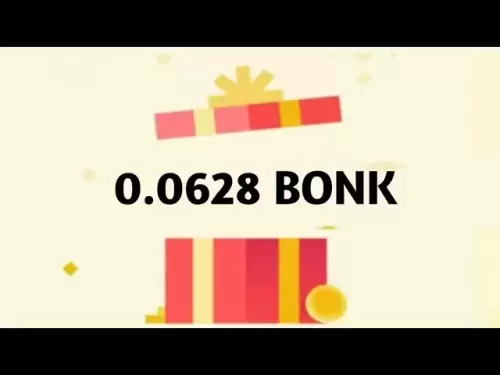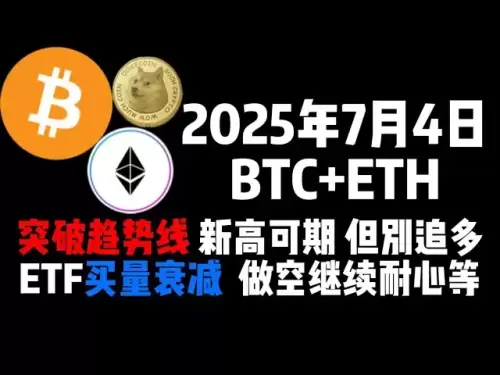-
 Bitcoin
Bitcoin $107,758.1435
-1.45% -
 Ethereum
Ethereum $2,490.6114
-3.32% -
 Tether USDt
Tether USDt $1.0004
0.00% -
 XRP
XRP $2.2042
-2.04% -
 BNB
BNB $651.4818
-1.12% -
 Solana
Solana $145.8782
-3.02% -
 USDC
USDC $0.9999
0.00% -
 TRON
TRON $0.2819
-1.39% -
 Dogecoin
Dogecoin $0.1621
-4.58% -
 Cardano
Cardano $0.5658
-4.18% -
 Hyperliquid
Hyperliquid $37.8181
-6.63% -
 Sui
Sui $2.8404
-4.91% -
 Bitcoin Cash
Bitcoin Cash $481.3703
-2.30% -
 Chainlink
Chainlink $13.0043
-4.79% -
 UNUS SED LEO
UNUS SED LEO $9.0464
0.26% -
 Avalanche
Avalanche $17.6115
-4.39% -
 Stellar
Stellar $0.2359
-2.11% -
 Toncoin
Toncoin $2.7507
-3.93% -
 Shiba Inu
Shiba Inu $0.0...01126
-4.41% -
 Litecoin
Litecoin $86.1256
-3.27% -
 Hedera
Hedera $0.1530
-3.13% -
 Monero
Monero $312.7785
-2.81% -
 Dai
Dai $1.0000
-0.01% -
 Ethena USDe
Ethena USDe $1.0001
-0.02% -
 Polkadot
Polkadot $3.3287
-5.55% -
 Bitget Token
Bitget Token $4.3840
-4.00% -
 Uniswap
Uniswap $6.8370
-10.63% -
 Pepe
Pepe $0.0...09548
-4.25% -
 Aave
Aave $260.2526
-6.11% -
 Pi
Pi $0.4658
-5.45%
What is the Beacon Chain and its functions?
The Beacon Chain is central to Ethereum 2.0, managing validators, coordinating shards, and ensuring network security and finality through Casper FFG.
Apr 08, 2025 at 12:01 am

The Beacon Chain is a fundamental component of the Ethereum network, introduced as part of Ethereum's transition from a Proof of Work (PoW) to a Proof of Stake (PoS) consensus mechanism. This transition, known as Ethereum 2.0 or Eth2, aims to improve the scalability, security, and energy efficiency of the Ethereum blockchain. The Beacon Chain serves as the backbone of this new architecture, managing the network's validators and coordinating the sharding system.
The Role of the Beacon Chain in Ethereum 2.0
The Beacon Chain is essentially the central coordinator of the Ethereum 2.0 network. It manages the validators, who are responsible for proposing and validating blocks, and it keeps track of the state of the entire network. This includes maintaining the list of active validators, their stakes, and their rewards or penalties. The Beacon Chain also plays a crucial role in the sharding system, which is designed to increase the network's capacity by processing transactions in parallel across multiple shards.
Validators and Staking on the Beacon Chain
Validators are participants in the Ethereum network who stake their Ether (ETH) to participate in the consensus process. To become a validator, one must stake 32 ETH. Once staked, validators are randomly selected to propose and validate blocks. The Beacon Chain keeps track of these validators and their stakes, ensuring that the network remains secure and decentralized. Validators are rewarded for their participation and can be penalized for malicious behavior or inactivity.
The Sharding System and the Beacon Chain
Sharding is a key feature of Ethereum 2.0 designed to increase the network's scalability. The Beacon Chain coordinates the shards, ensuring that they operate in sync and that data is correctly shared across the network. Each shard processes its own set of transactions and smart contracts, but the Beacon Chain ensures that the overall state of the network remains consistent. This coordination is crucial for maintaining the integrity and security of the Ethereum network.
Crosslinks and the Beacon Chain
Crosslinks are another important function of the Beacon Chain. They are references to the state of individual shards, which the Beacon Chain uses to ensure that the shards are operating correctly. By regularly updating crosslinks, the Beacon Chain can verify the state of each shard and ensure that the entire network remains in sync. This process is essential for the smooth operation of the sharding system and for maintaining the overall security of the Ethereum network.
The Beacon Chain and Finality
Finality refers to the point at which a block is considered irreversible and permanently added to the blockchain. The Beacon Chain uses a mechanism called Casper FFG (Friendly Finality Gadget) to achieve finality. This mechanism involves validators voting on blocks, and once a block receives enough votes, it is considered finalized. The Beacon Chain tracks these votes and ensures that finality is achieved in a timely and secure manner, which is crucial for the reliability of the Ethereum network.
The Beacon Chain and Ethereum's Transition
The Beacon Chain was launched in December 2020 as the first step in Ethereum's transition to Ethereum 2.0. It operates in parallel with the existing Ethereum mainnet, which continues to use Proof of Work. The transition to Ethereum 2.0 is being carried out in phases, with the Beacon Chain serving as the foundation for future upgrades. The ultimate goal is to merge the existing Ethereum mainnet with the Beacon Chain, fully transitioning to a Proof of Stake consensus mechanism.
Interacting with the Beacon Chain
For users interested in interacting with the Beacon Chain, there are several ways to do so. One can become a validator by staking 32 ETH and running validator software. This involves setting up a node and participating in the consensus process. Alternatively, users can delegate their ETH to a staking pool or a staking service, which manages the validator duties on their behalf. There are also various tools and platforms available for monitoring the Beacon Chain and tracking validator performance.
Security and the Beacon Chain
The security of the Beacon Chain is paramount for the overall security of the Ethereum network. It relies on the honesty and participation of validators, who are incentivized to act in the best interest of the network through rewards and penalties. The Beacon Chain also implements various security measures, such as slashing conditions, which penalize validators for malicious behavior. These measures help to maintain the integrity and security of the Ethereum network.
The Beacon Chain and Network Upgrades
The Beacon Chain is designed to be flexible and adaptable, allowing for future upgrades and improvements to the Ethereum network. It serves as the foundation for implementing new features and enhancements, such as improved scalability and better support for decentralized applications. As Ethereum continues to evolve, the Beacon Chain will play a crucial role in facilitating these upgrades and ensuring that the network remains at the forefront of blockchain technology.
Frequently Asked Questions
Q: How does the Beacon Chain affect the existing Ethereum mainnet?
A: The Beacon Chain operates in parallel with the existing Ethereum mainnet, which continues to use Proof of Work. The Beacon Chain is part of the transition to Ethereum 2.0, and the ultimate goal is to merge the mainnet with the Beacon Chain, fully transitioning to a Proof of Stake consensus mechanism. Until the merge is complete, the existing mainnet remains unaffected by the Beacon Chain.
Q: Can I stake less than 32 ETH on the Beacon Chain?
A: Yes, you can stake less than 32 ETH by using a staking pool or a staking service. These platforms allow users to pool their ETH together to meet the 32 ETH requirement for becoming a validator. By delegating your ETH to a staking pool, you can participate in the consensus process and earn rewards without having to run your own validator node.
Q: What happens if a validator goes offline on the Beacon Chain?
A: If a validator goes offline, they can be penalized through a process called inactivity leakage. This penalty reduces the validator's stake over time, incentivizing them to remain online and active. If a validator remains offline for an extended period, they may be removed from the validator set and lose their entire stake.
Q: How does the Beacon Chain ensure the security of the Ethereum network?
A: The Beacon Chain ensures the security of the Ethereum network through several mechanisms. It relies on the honesty and participation of validators, who are incentivized to act in the best interest of the network through rewards and penalties. The Beacon Chain also implements slashing conditions, which penalize validators for malicious behavior. Additionally, the Casper FFG mechanism used for finality helps to ensure that blocks are securely and irreversibly added to the blockchain.
Disclaimer:info@kdj.com
The information provided is not trading advice. kdj.com does not assume any responsibility for any investments made based on the information provided in this article. Cryptocurrencies are highly volatile and it is highly recommended that you invest with caution after thorough research!
If you believe that the content used on this website infringes your copyright, please contact us immediately (info@kdj.com) and we will delete it promptly.
- Bitcoin's Pattern Break: Are HODLers the Key to the Next Surge?
- 2025-07-04 18:50:12
- Bitcoin Price, Trump's Bill, and the $150K Dream: A NYC Take
- 2025-07-04 19:50:12
- Ethereum, LILPEPE, and the July Bounce: Will Pepe Steal ETH's Thunder?
- 2025-07-04 19:10:12
- Binance Institutional Loans: Unlocking 4x Leverage and Zero Interest for Whales
- 2025-07-04 19:15:12
- Bitcoin Bull Run: Analysts Eye Peak in Late 2025?
- 2025-07-04 19:20:13
- Pepe Indicators, Bullish Forecast: Can the Meme Coin Rally?
- 2025-07-04 19:25:12
Related knowledge
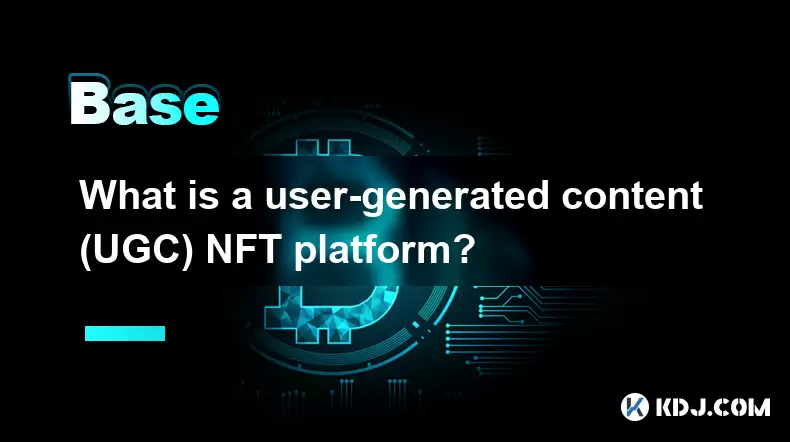
What is a user-generated content (UGC) NFT platform?
Jul 04,2025 at 01:49pm
Understanding the Concept of a UGC NFT PlatformA user-generated content (UGC) NFT platform is a digital marketplace or ecosystem where users can create, mint, and trade non-fungible tokens (NFTs) that represent ownership of original digital content they produce. Unlike traditional NFT platforms where creators often include professional artists or develo...
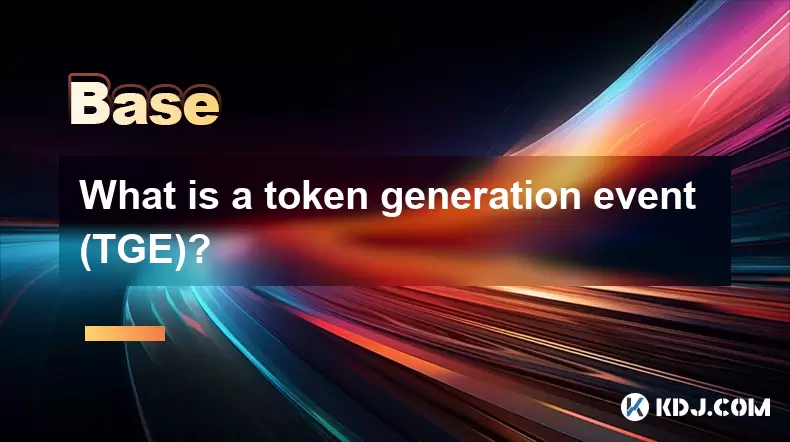
What is a token generation event (TGE)?
Jul 04,2025 at 07:14am
Understanding the Basics of a Token Generation Event (TGE)A Token Generation Event (TGE) refers to the process through which a blockchain project creates and distributes its native tokens to investors, participants, or stakeholders. This event is often associated with new cryptocurrency projects launching on platforms like Ethereum, Binance Smart Chain,...
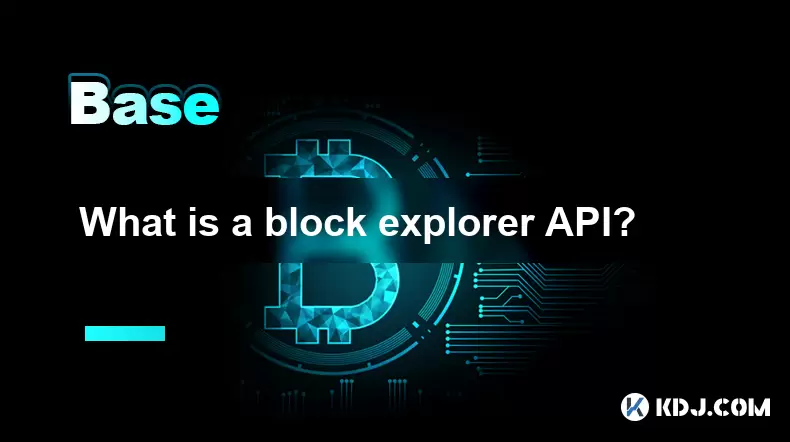
What is a block explorer API?
Jul 04,2025 at 05:07am
Understanding the Role of a Block Explorer APIA block explorer API is a crucial interface that enables developers and users to interact programmatically with blockchain data. Unlike traditional APIs used in web services, a block explorer API specifically provides access to blockchain-related information such as transaction details, wallet balances, bloc...
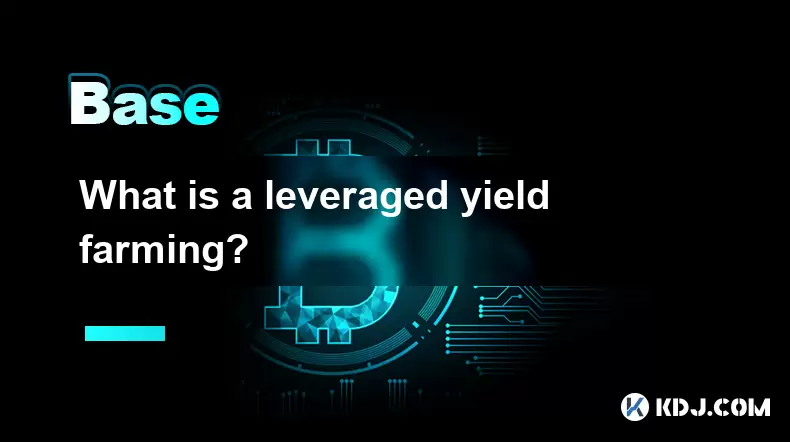
What is a leveraged yield farming?
Jul 04,2025 at 09:36am
Understanding Leveraged Yield FarmingLeveraged yield farming is a more advanced form of yield farming, which itself is a popular method in the decentralized finance (DeFi) ecosystem to earn returns by providing liquidity to various protocols. In traditional yield farming, users deposit tokens into a DeFi platform and earn rewards in return, often in the...
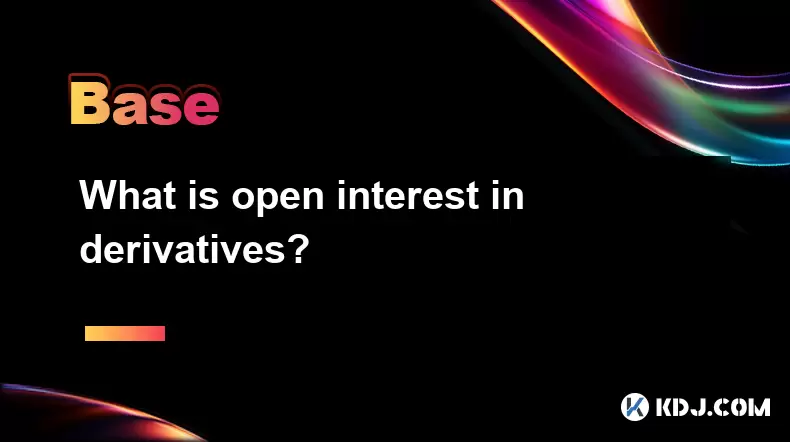
What is open interest in derivatives?
Jul 03,2025 at 02:49pm
Understanding Open Interest in DerivativesOpen interest is a critical metric used in the cryptocurrency derivatives market, particularly when analyzing futures and options contracts. It represents the total number of outstanding contracts that have not been settled or closed by either party involved. Unlike trading volume, which counts all trades made i...
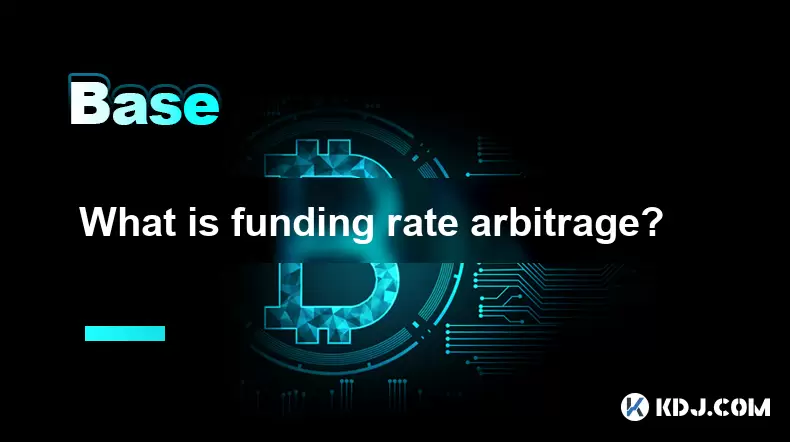
What is funding rate arbitrage?
Jul 04,2025 at 11:43am
Understanding Funding Rate Arbitrage in the Cryptocurrency MarketFunding rate arbitrage is a trading strategy employed by crypto traders to exploit differences in funding rates across various perpetual futures exchanges. In perpetual contracts, funding rates are periodic payments made between long and short traders depending on whether the price of the ...

What is a user-generated content (UGC) NFT platform?
Jul 04,2025 at 01:49pm
Understanding the Concept of a UGC NFT PlatformA user-generated content (UGC) NFT platform is a digital marketplace or ecosystem where users can create, mint, and trade non-fungible tokens (NFTs) that represent ownership of original digital content they produce. Unlike traditional NFT platforms where creators often include professional artists or develo...

What is a token generation event (TGE)?
Jul 04,2025 at 07:14am
Understanding the Basics of a Token Generation Event (TGE)A Token Generation Event (TGE) refers to the process through which a blockchain project creates and distributes its native tokens to investors, participants, or stakeholders. This event is often associated with new cryptocurrency projects launching on platforms like Ethereum, Binance Smart Chain,...

What is a block explorer API?
Jul 04,2025 at 05:07am
Understanding the Role of a Block Explorer APIA block explorer API is a crucial interface that enables developers and users to interact programmatically with blockchain data. Unlike traditional APIs used in web services, a block explorer API specifically provides access to blockchain-related information such as transaction details, wallet balances, bloc...

What is a leveraged yield farming?
Jul 04,2025 at 09:36am
Understanding Leveraged Yield FarmingLeveraged yield farming is a more advanced form of yield farming, which itself is a popular method in the decentralized finance (DeFi) ecosystem to earn returns by providing liquidity to various protocols. In traditional yield farming, users deposit tokens into a DeFi platform and earn rewards in return, often in the...

What is open interest in derivatives?
Jul 03,2025 at 02:49pm
Understanding Open Interest in DerivativesOpen interest is a critical metric used in the cryptocurrency derivatives market, particularly when analyzing futures and options contracts. It represents the total number of outstanding contracts that have not been settled or closed by either party involved. Unlike trading volume, which counts all trades made i...

What is funding rate arbitrage?
Jul 04,2025 at 11:43am
Understanding Funding Rate Arbitrage in the Cryptocurrency MarketFunding rate arbitrage is a trading strategy employed by crypto traders to exploit differences in funding rates across various perpetual futures exchanges. In perpetual contracts, funding rates are periodic payments made between long and short traders depending on whether the price of the ...
See all articles























